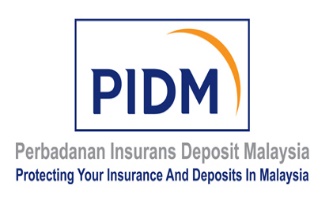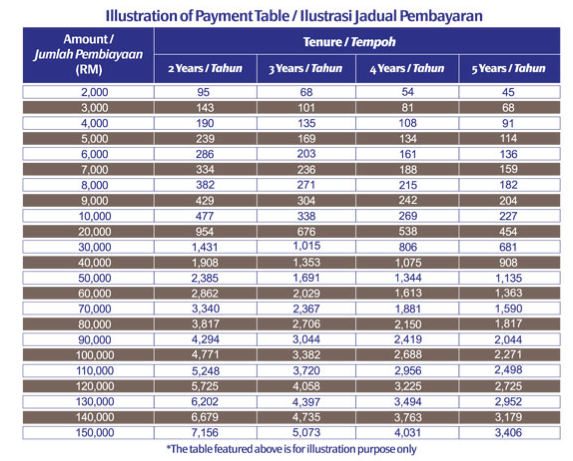Perbadanan Insurance Deposit Malaysia (PIDM) as known within Malaysia, is a government agency or lawful body that is created under the Malaysia Deposit Insurance Corporation Act (MDIC act) in 2005. Around the globe, PIDM is also known as Malaysia Deposit Insurance Corporation (MDIC). When PIDM was established in 2005, the main purpose was to regulate the national deposit insurance system in Malaysia and protecting depositors. Since early 31 December 2010, the aim of PIDM was broadened to manage the Takaful and Insurance Benefits Protection System (TIPS) to give owners of takaful certificates and insurance policies the necessary protection.
Who are the members of PIDM?
Member banks and insurer members are institutions that make up PIDM memberships. All commercial banks that are registered under the Financial Services Act (FSA) 2013 and all Islamic banks licensed under the Islamic Financial Services Act 2013 as well as locally incorporated subsidaries of foreign banks enforced in Malaysia are member banks of PIDM. One way to identify if a bank is a member bank of PIDM is to search for the sign at the front of every bank entrance as membership is denoted by the decal with a blue and orange logo sign stamped by the initials “PIDM” on the left.
Who pays for PIDM’s protection?
To enjoy the services and protection provided by PIDM as a takaful certificate/insurance policy owner, there is no requirement to pay any premium to PIDM. It is the member banks and insurer members that pay annual premiums and levies to PIDM.
What is the mandate of PIDM?
One of the mandates of PIDM is to execute and govern a deposit insurance system and a takaful and insurance benefits protection system. It also dispenses insurance against the loss of fraction or all deposits for which a deposit-taking member is liable and to give protection against the loss of fraction or all of takaful or insurance benefits for which an insurer member is accountable. PIDM also presents incentives for sound risk management in the financial system and contributes to the balance in the financial system. Through his, PIDM aims to take appropriate actions to reduce costs in the financial system.
How does PIDM function in stabilising the financial system?
PIDM is the final authority of member banks and insurer members in Malaysia. PIDM has a spectrum of legislative powers to mediate early in afflicted member institutions to diminish any plausibility of member instituition failure. If however a member instituition is no longer held viable by Bank Negara, PIDM can take position to manage the the institution or take measurable and appropriate steps to fix member institution while mimimising costs to the financial system.
Who governs PIDM?
The people who govern PIDM are a nine-member Board of Directors appointed by the Minister of Finance from both the public and private sectors. A non executive Chairman leads the Board while the Governor of Bank Negara Malaysia has their own representatives, the Secretary of Treasury, two other Directors from the public sector and four directors from the private sector which of three have applicable banking and financial sector experience.
What are institutions that are not member banks of PIDM for Deposit Insurance System?
Institutions that are not considered member banks of PIDM in the Deposit Insurance System (DIS) include investment banks, overseas branches of member banks, development financial instituions and cooperative banks. Any non-bank financial intermediaries like provident and pension funds, cooperative societies, housing credit institutions, and building socieities that are not managed by Bank Negara Malaysia are non member banks of PIDM as well.
What is Takaful and Insurance Benefit Protection System? (TIPS)
TIPS is a governance system established for the protection of owners of takaful certificates and insurance policies from the loss of their eligible takaful or insurance benefits in the unfortunate event that the insurer member fails. Takaful operators and insurance companies are also known as “insurer members” and are considered member institutions of PIDM.
Deposit that meet the requirements for protection include current and savings desposit accounts, fixed deposits, joint acounts, trust accounts and foreign currency deposits. Deposits that do not meet the requirement for protections on the other hand are deposits not payable in Malaysia, inter-bank money market placements, negotiable instruments of deposits (NIDs) and other bearer deposits, repurchase agreements and unit trusts.
Which institutions are not member banks of PIDM under the Takaful and Insurance Benefit Protection System (TIPS)?
Institutions which are not member banks of PIDM under TIPS include reinsurance companies and retakaful operators, international takaful operators licensed under the Islamic Financial Services Act (IFSA) 2013, financial guarantee insurers such as Danajamin Nasional Berhad, offshore insurance companies and other players in the insurance industry like insurance brokers and adjusters.
What are the member institutions’ duty?
Member institutions are required to pay annual premiums and levies to support the Deposit Insurance System (DIS) and Takaful and Insurance Benefits Protection Systems (TIPS) and to comply and observe to the regulations, terms and conditions of membership set by PIDM.
What about the closing of membership?
Unless membership is voluntarily terminated by PIDM, membership is continous. However, if membership is declared by Bank Negara Malaysia that it is bankrupt or about to become bankrupt, membership with the approval of the Minister of Finance will be terminated.
Cancellation of membership?
Membership will be cancelled if Bank Negara Malaysia has taken back member institution’s license or if member instituion has resigned it’s license to Bank Negara Malaysia.
Coverage
RM500,000 Maximum limit protected benefits for General and Family Solidarity Takaful and Life Insurance. Some of the benefits protected are loss of or damage to eligible property, death and related benefits, permanent disability, critical illness, disability income, medical expenses, refundable and prepaid premiums.
PIDM has also released a new project called “PIDM Smart Money Project”. PIDM has educational programmes to promote financial awareness and literacy on savings through advertising and campaigns. For further information, PIDM has a toll free information line at 1-800-88-1266 available from Monday to Fridays between 8.30am and 5.30pm and can also be contacted through email at [email protected]


